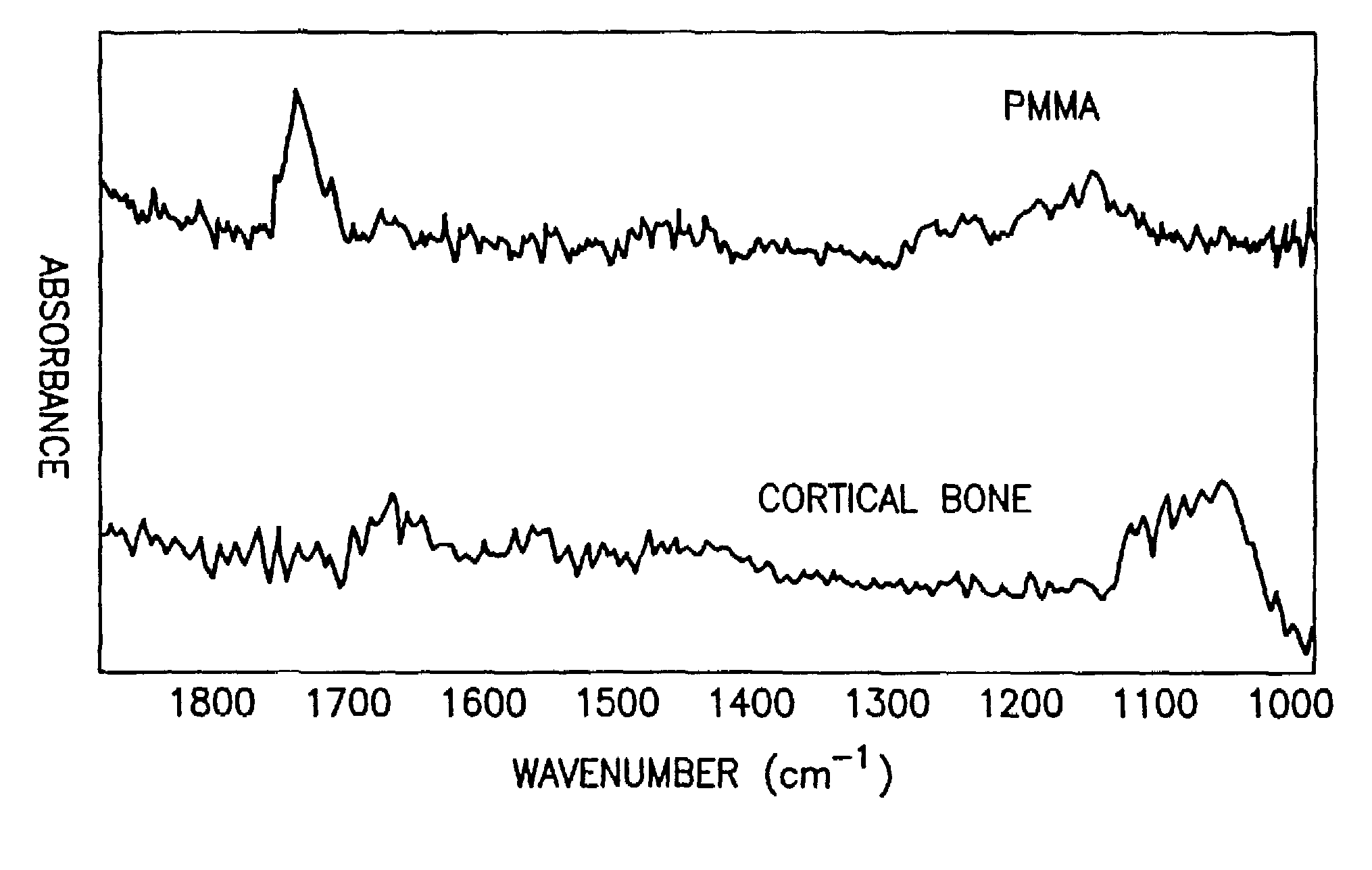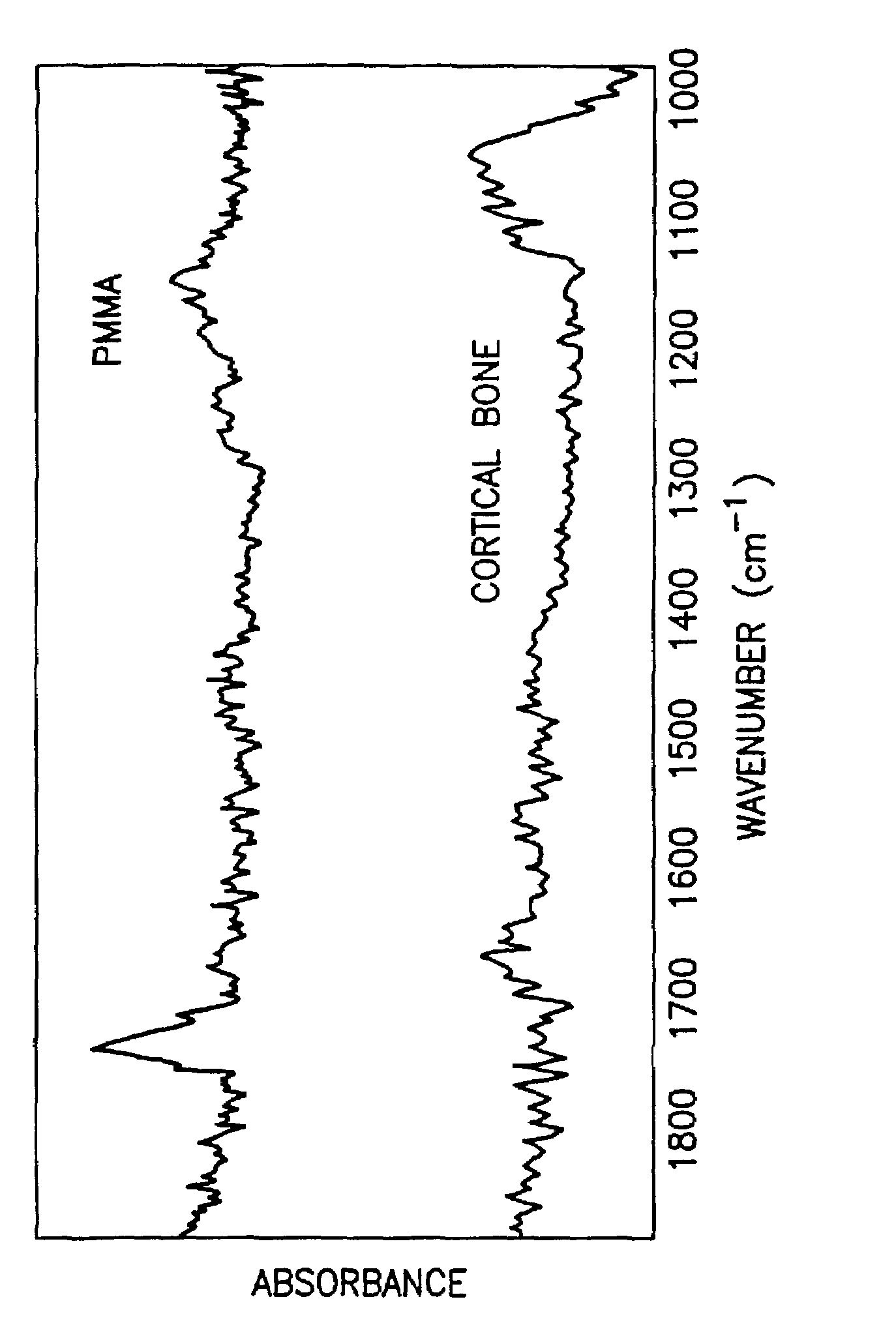Utilization of an infrared probe to discriminate between materials
a technology of infrared probes and materials, applied in the field of infrared probes to discriminate between materials, can solve the problems of difficult to distinguish non-amalgam-based fillings, difficult for surgeons to visually discern pmma from the bone, and inability to achieve the effect of detecting the pmma visually
- Summary
- Abstract
- Description
- Claims
- Application Information
AI Technical Summary
Problems solved by technology
Method used
Image
Examples
Embodiment Construction
[0051]The present invention involves providing an IFOP which is operative in the mid-infrared region of the EM (approximately 400 cm−1 to 5,000 cm−1) or in the near infrared region of the EM (approximately 5,000 cm−1 to 14,000 cm−1).
[0052]The probe for use in the present invention can detect infrared radiation by ATR or by reflection. In either case, the evaluation of the region of interest to determine whether it is a host tissue or a non-host material can be carried out by, for example, peak shift analysis, peak area analysis, a combination of peak shift analysis and peak area analysis or by chemometric parameters.
[0053]An example of a probe for use in the present invention comprises an ATR element, or can receive reflected IR energy directly, and has an input end and an output end for receiving IR and transmitting attenuated IR radiation, respectively (see U.S. Pat. Nos. 5,170,056 and 5,923,808, the entire contents of both U.S. Pat. Nos. 5,170,056 and 5,923,808 are incorporated b...
PUM
 Login to View More
Login to View More Abstract
Description
Claims
Application Information
 Login to View More
Login to View More - R&D
- Intellectual Property
- Life Sciences
- Materials
- Tech Scout
- Unparalleled Data Quality
- Higher Quality Content
- 60% Fewer Hallucinations
Browse by: Latest US Patents, China's latest patents, Technical Efficacy Thesaurus, Application Domain, Technology Topic, Popular Technical Reports.
© 2025 PatSnap. All rights reserved.Legal|Privacy policy|Modern Slavery Act Transparency Statement|Sitemap|About US| Contact US: help@patsnap.com


